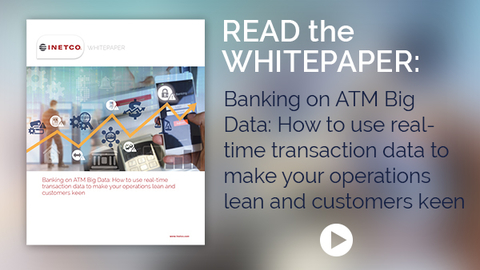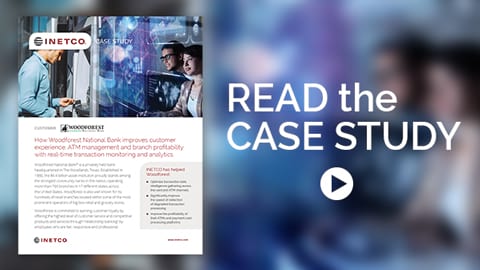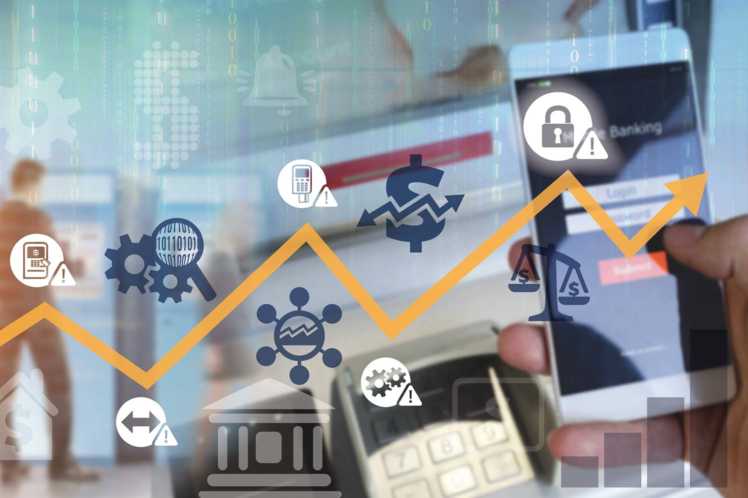ATM availability strategies continue to evolve and expand, mostly driven by easier data retrieval and growing customer demands. Here is a brief description of where we have come from, and what our future possibilities are…
Going back to the start: ATM uptime and downtime
It used to be that the best way to gage the performance of your ATM fleet was to monitor a device’s uptime and downtime. Although this is still important, many banks, credit unions and other ATM deployers have figured out that a 98 percent-plus availability rate does not necessarily mirror that same completion rate when it comes to customer transactions. For instance, if downtime occurs at a full service ATM during a high-usage time period, the impact on end customer experience and profitability will be higher than if the downtime took place at a less significant ATM during a low-usage time period. Simply put, ATM availability alone is failing the customer.

Where we are now: Tracking customer interactions
Many of us are investing in self-service initiatives such as branch transformation, more sophisticated ATMs and payments infrastructure modernization. New technologies and applications are allowing customers to initiate a broader range of complex service and cross-channel transactions that were typically handled by branch tellers and customer service representatives. Examples include everything from check deposits, bill payments and account balance confirmations, to applying for mortgages, card and loan applications, or personalized offers and promotions.
Customers that are digitally minded love this growing convenience…but only if their interactions are successful and their value-added services are responding the way they expect. This is why the ability to pull real-time transaction data off the wire is such a beautiful, evolutionary thing. This data extends visibility beyond the ATM, to reveal how networks, applications, hosts and third party service providers are responding. Every transaction tells a story about how the end-to-end ATM network is performing, and more importantly, what the customer has actually experienced.
Transaction data offers great opportunity when it comes to improving and redefining your ATM availability strategy. Financial institutions that already track customer interactions report, on average, 65-75% faster resolution of performance issues affecting transaction completion rates. Many have also expanded channel management performance metrics to include:
- Transaction completion rates or failed customer interactions – A better measurement of how ATM network performance directly relates to the customer experience
- Impact of lost opportunities – Still considering ATM availability, but based on parameters such as location or ATM tiers/groups, time of day or peak transaction times
- Transaction slowdowns – how many transactions did not complete as expected by the customer, and as regulated or agreed to by the service provider
- Cash utilization rates – to predict cash in/cash out flow
- Average queuing times at the ATM
The near (and already here) future: Customer engagement analytics
Growing digital transaction volumes are resulting in an explosion of ATM “Big Data”. For anyone concerned about profitability and the end customer experience, this data is a goldmine…if you can tap into it in a timely, cost-effective way.

A centralized data and monitoring hub instantly widens the value proposition of transaction data. It makes it easy and cost effective for not only the operations team, but also the business side – digital executives, channel managers, marketers and data analysts – to instantly access the intelligence they need to deliver more value to existing customers, acquire new ones and improve profitability through better ATM placement and service offerings.
Customer engagement analytics is all about putting a business lens on your ATM “Big Data” to perform granular customer segmentation, understand customer usage by device or product, and analyze how customer experience and revenue is affected due to the performance of customer interactions. With customer engagement analytics, you can perform predictive modelling to estimate line-ups at service points, identify common interaction sequences, and measure things such as cash flow movement. Interactive reporting dashboards will help you adopt data-driven strategies around operations, customer usage, channel performance and profitability.
In a nutshell, knowing ATM availability is a fine start, but tracking customer interactions and utilizing transaction data for customer engagement analytics is something you may want to put on your roadmap when it comes to evolving your channel management strategy and getting the most out of your ATM “Big Data”.
If you would like to learn more about a new customer-centric approach to managing self-service banking networks that can evolve and expand your ATM availability strategy, download the whitepaper, “Banking on ATM Big Data: How to use real-time transaction data to make your operations lean and customers keen.”

